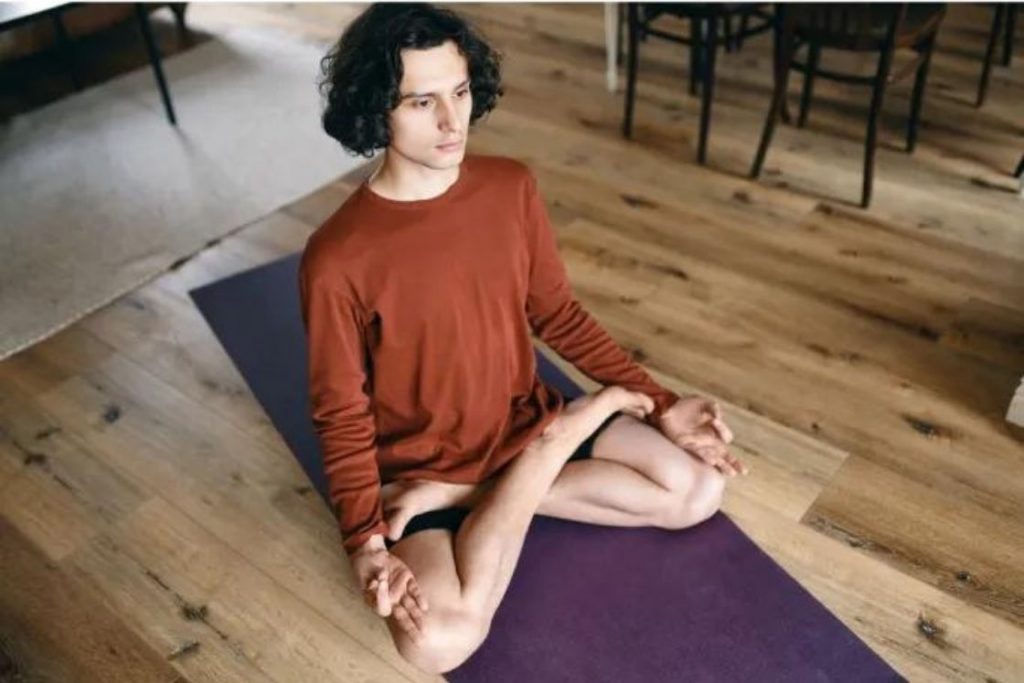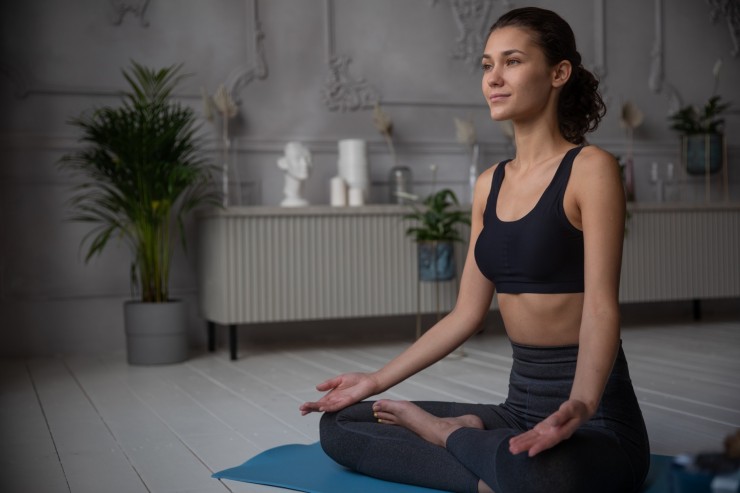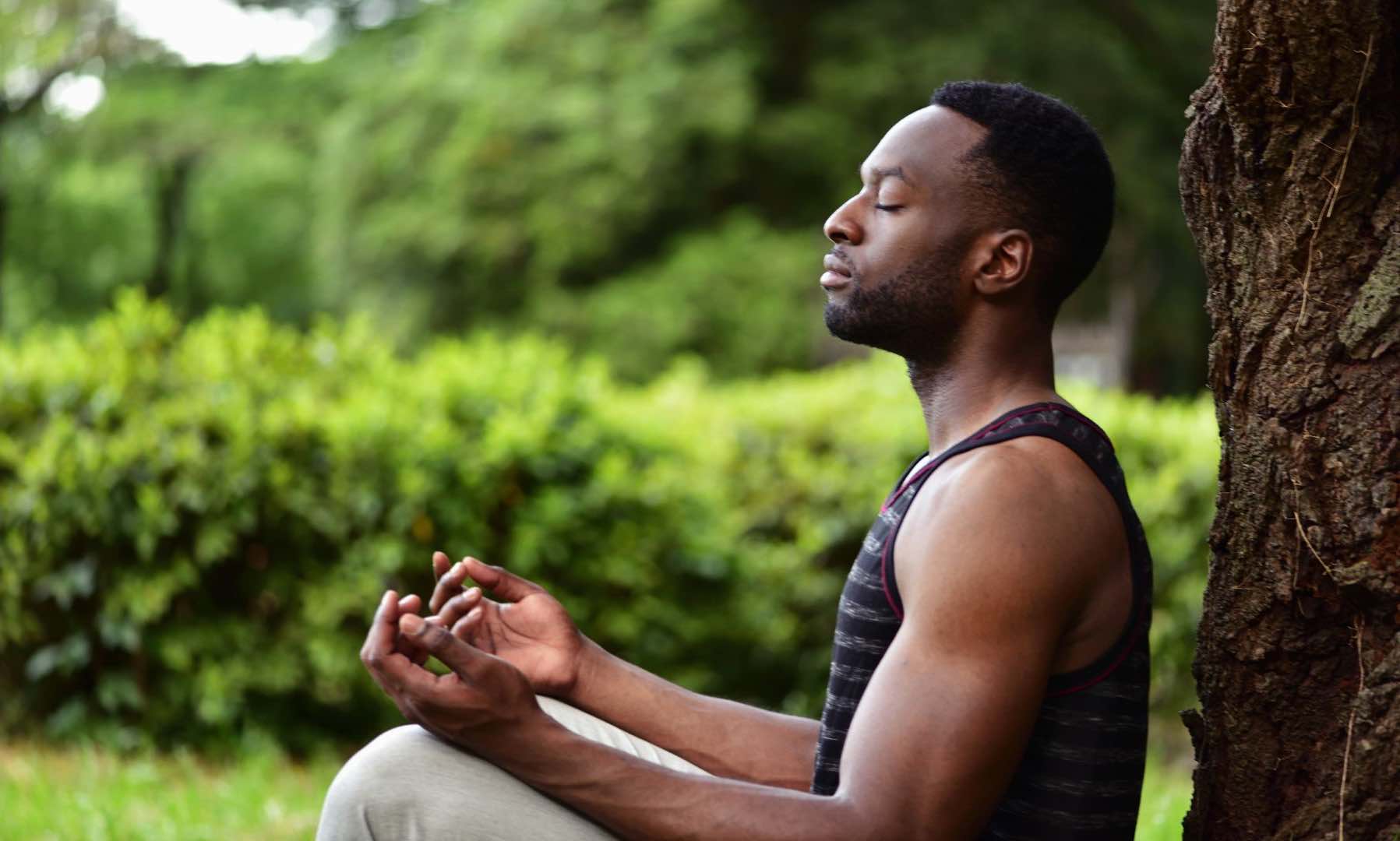Meditating with eyes open might sound unusual to some, but it’s a practice that can offer unique benefits. Unlike the more common closed-eye meditation, open-eye meditation encourages you to connect with your environment while still achieving a meditative state. This approach can be particularly helpful for people who struggle to concentrate or feel restless during traditional meditation. In this blog post, we’ll find out how meditating with your eyes open works, its advantages, and how you can incorporate it into your mindfulness routine.

Contents
Can You Meditate With Eyes Open?
When it comes to the age-old question of whether you can meditate with your eyes open, the answer is an emphatic yes. While many traditions advocate for closed-eye meditation, keeping your eyes open during your practice can offer a unique set of benefits.
Benefits of Meditating With Eyes Open

- Enhanced Focus: By practicing meditation with your eyes open, you can cultivate a deep sense of focus and awareness, allowing you to stay present in the moment.
- Mind-Body Connection: Keeping your eyes open can help you strengthen the connection between your mind and body, promoting a more integrative meditation experience.
- Improved Alertness: Open-eyed meditation can boost your alertness levels, making it an excellent choice for those times when you need a mental pick-me-up.
- Soft Gaze: Maintain a soft, unfocused gaze to prevent distractions and facilitate a sense of relaxation.
- Neutral Environment: Choose a quiet and neutral environment to minimize external stimuli that may disrupt your practice.
- Practice Patience: If you’re new to open-eyed meditation, be patient with yourself and give yourself time to adjust to this new approach.
How To Meditate With Open Eyes?
Here’s a simple guide on how to practice open-eye meditation:
1. Find a Quiet Space:
Choose a quiet and comfortable place where you can sit without being disturbed. This environment should be conducive to relaxation and free from distracting noises.
2. Adopt a Comfortable Position:
Sit in a comfortable position with your back straight. You can sit on a chair, cushion, or the floor, ensuring your posture supports alertness without strain.
3. Set a Soft Gaze:
Select a point in front of you to gently focus on. This could be a spot on the wall, a candle flame, or a simple object. Your gaze should be soft and relaxed, avoiding intense focus or strain on the eyes.
4. Pay Attention to Your Breath:
Begin to turn your attention inward by focusing on your breath. Notice the sensation of the air moving in and out of your nostrils or the rise and fall of your chest. This will help you anchor your mind in the present moment.
5. Be Mindful of Your Surroundings:
While maintaining a soft gaze, become aware of your surroundings. Notice the colors, shapes, and light in your peripheral vision. Open-eye meditation allows you to be present within your environment, not detached from it.
6. Redirect Your Focus Gently:
Your mind will inevitably wander. When you notice your attention has drifted, gently guide it back to your chosen focal point and your breath. The practice is in recognizing distractions and returning to the moment.
7. Start with Short Sessions:
If you’re new to open-eye meditation, start with short sessions of about 5-10 minutes and gradually increase the duration as you become more comfortable with the practice.
8. Integrate Mindfulness into Daily Activities:
One of the benefits of open-eye meditation is its applicability to everyday life. Try applying the principles of gentle focus and present-moment awareness to routine activities, such as walking or eating.
Traditions That Use Open-eye Meditation:
Here are some traditions that incorporate open-eye meditation practices:

1. Zen Buddhism:
Zazen: This core Zen meditation practice traditionally involves sitting upright with your eyes slightly open and gazing downward at a point a few feet in front of you. This gaze is soft and unfocused, not staring intently. The emphasis is on maintaining awareness and openness to both the internal and external world.
2. Vipassana Meditation:
Vipassana: This mindfulness meditation technique, popularized by S.N. Goenka, can be practiced with either open or closed eyes. When practiced with open eyes, the focus is on observing the visual field with detached awareness, noticing sensations like light, color, and movement without judgment.
3. Dzogchen:
Gazing meditation: Some Dzogchen practices, a school of Tibetan Buddhism, involves gazing at an object, often a mandala, with an open and relaxed gaze. This practice aims to cultivate a state of non-judgmental awareness and inner stillness.
4. Shambhavi Mudra:
Inner Gaze: This practice, originating from the Tantric tradition, involves focusing your gaze at a specific point between your eyebrows, known as the third eye. This is not done with physical effort but with a gentle inward focus. The aim is to cultivate inner awareness and awaken higher states of consciousness.
5. Trataka Meditation:
Candle Gazing: This ancient practice involves gazing steadily at a flame from a candle with soft eyes. It is meant to improve concentration, develop mental clarity, and awaken the third eye.
Is There A Difference Between Meditating With Your Eyes Closed Or Opened?
Yes, there are some key differences between meditating with your eyes closed and with your eyes open. Here’s a breakdown of the potential effects of both:
Meditating with Eyes Closed:

Benefits:
- Reduced distractions: Closing your eyes blocks out visual stimuli from the environment, allowing you to focus inward on your breath, thoughts, and bodily sensations without external interference.
- Promotes relaxation: The darkness created by closed eyes can induce a sense of calm and ease, making it easier to enter a deeper meditative state.
Drawbacks:
- May cause drowsiness: Some individuals find that closing their eyes leads to drowsiness, which can hinder the focus and alertness desired during meditation.
- Limited awareness: Closed-eye meditation may limit your awareness of your surroundings, potentially hindering the development of mindfulness in daily life.
Meditating with Eyes Open:
Benefits:
- Increased awareness: Keeping your eyes open allows you to be more mindful of your surroundings and cultivate present-moment awareness of both internal and external stimuli.
- Can be easier for beginners: Some individuals find it easier to stay focused and avoid losing concentration when they have a visual point of reference, especially if they struggle with maintaining focus with their eyes closed.
Drawbacks:
- More susceptible to distractions: External sights and sounds can easily pull your attention away from your internal focus, making it more challenging to maintain a state of mindfulness.
- Requires more practice: Maintaining an open-eyed gaze without becoming distracted by external stimuli requires practice and focus development.
Ultimately, the best approach for you depends on your individual preferences and goals:
- If you struggle with distractions in your environment, consider starting with closed-eye meditation to create a less stimulating space.
- If you find closed-eye meditation uncomfortable or struggle to stay focused, try meditating with your eyes open, focusing on a single point in the distance to maintain your gaze without becoming fixated.
- You can also experiment with both methods to see which one feels more natural and allows you to achieve a deeper state of mindfulness.
Frequently Asked Questions
How do I activate my third eye meditation?
Sit comfortably with your spine straight, and close your physical eyes. With your mind’s eye, bring your attention to the spot between your eyebrows and imagine a third eye opening there. Visualize a radiant indigo light emanating from this spot, expanding your inner awareness.
What should I do with my eyes when meditating?
To focus on the spiritual eye, you do not need to focus your eyes directly at this point, which can be very uncomfortable and make you cross your eyes. Imagine a distant mountain, and focus your gaze on the top of it. Your eyes should be relaxed and looking slightly upward.
Does meditation open chakras?
Meditation can help you connect to your inner energies and open up pathways to healing and growth. Chakra meditation, where you bring full attention to your body’s energy centers, can be particularly effective in unblocking chakras.
Can you open your third eye with meditation?
Some believe that practices like meditation, sun gazing, and crystal healing can help unblock the third eye, potentially leading to increased intuition and spiritual abilities. However, scientific research on these claims is lacking.
How do I activate my spiritual eyes?
To activate your spiritual eyes, practice meditation techniques that focus on visualization and inner awareness. Close your physical eyes, visualize your third eye opening, and concentrate on expanding your inner perception. Regular practice can enhance your spiritual vision.

Hello, I’m Ravindra. Over the years, I’ve immersed myself deeply into the world of fitness and health, transforming both my body and mind. Writing has allowed me to share my journey, insights, and expertise with those just starting out and seasoned fitness enthusiasts alike. Beyond just routines and diets, I believe in inspiring others to adopt a holistic approach to well-being.
